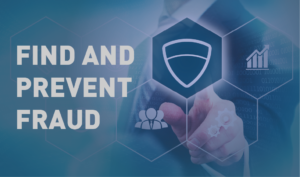The Art and Science of Sniffing Out Fraud Published March 11, 2019
 Art and science are both skills that a commercial lending underwriter takes to work every day. With responsibility for reducing lender risk and exposure, they are on the frontlines verifying income, reviewing bank statements, examining tax records, evaluating financial statements, pulling credit reports, and seeking additional information to help guide their fundamental decision—should this business get funding? As the gatekeeper, they have to balance the nuances of data (science) and their intuition (art) to determine if the borrower will repay the funds extended by the lender.
Art and science are both skills that a commercial lending underwriter takes to work every day. With responsibility for reducing lender risk and exposure, they are on the frontlines verifying income, reviewing bank statements, examining tax records, evaluating financial statements, pulling credit reports, and seeking additional information to help guide their fundamental decision—should this business get funding? As the gatekeeper, they have to balance the nuances of data (science) and their intuition (art) to determine if the borrower will repay the funds extended by the lender.
The threat of loan fraud exists throughout the underwriting process and is often top of mind for the underwriter. All questions from “Are the provided documents valid?” to “Does the business really even exist?” to “Can this data be verified?” are up for consideration and weigh on the shoulders of the underwriter. However, fraud as a criminal act is a broad spectrum of actions and intentions that are worth examining in greater detail.
For example, there are cases that can be identified through criminal investigation records outlining what could be thought of as “hardcore criminal fraud”. In cases such as this one, “Loan Fraud Defendant’s Lies and False Documents Qualify Him for Five Years in Prison”, it’s quite clear that through the string of lies, deceptions, fake tax returns, forged bank statements, and an immediate filing of bankruptcy after collecting the funds, the borrower had the intention of obtaining loans that he would never repay. This is a blatant example of fraud. And while this isn’t necessarily an isolated case, this is the exception and not the norm when it comes to business lending.
Keep in mind, there were millions of small business loans totaling billions of dollars and the large majority of them likely will be repaid in full and on time. However, there will be a small portion of these loans that will default and will leave a trail of unanswered questions. While fraud will likely be on the minds of underwriters, the reality is that these heavy criminal fraud cases mentioned above are few and far between. The more likely “fraud-light” indicators will be much less nefarious, but nonetheless important for underwriters to sniff out to improve the overall credit quality of their portfolios.
The reality is that desperate people at times do desperate things. If a business is struggling or the borrower has less than optimal credit, they may be inclined to stretch the truth when it comes to their application and documentation. One can only speculate, but while their intentions are likely to repay the loans in full, these “fraud-light” occurrences should raise red flags that should not be taken lightly.
In the world of Tax Guard, we can identify a several key tax-related indicators that can give underwriters verified data (science) to plug into their intuitive (artistic) decision making processes. These range from verifying income on tax returns to confirming business ownership to validating the status of an Installment Agreement (payment agreement) with the IRS.
In our next post, we cover these indicators in greater detail and explain how they can be used to strengthen the underwriting process. Click here.
